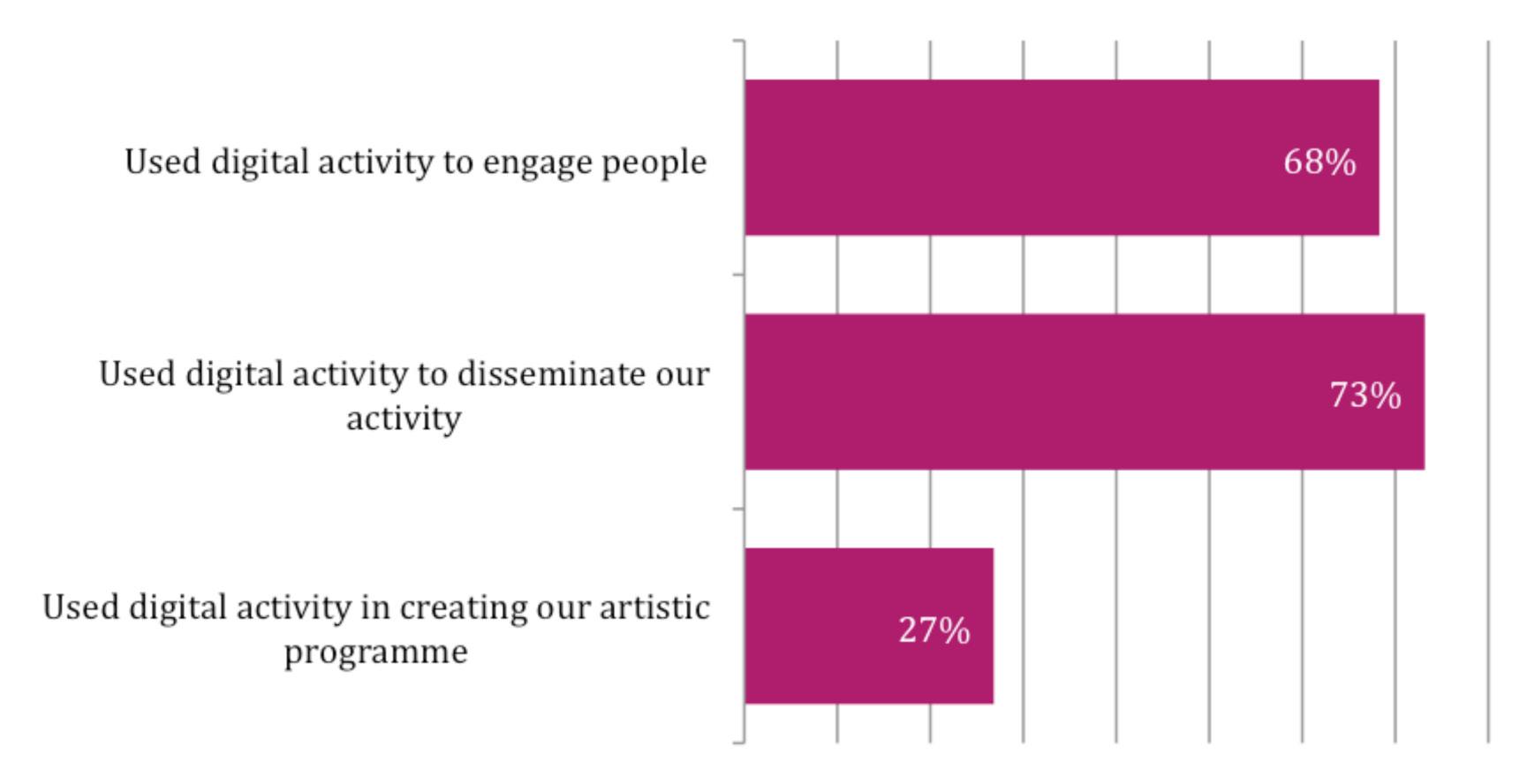
4 minute read
New contexts, sites and settings
4.9
4.10 Beyond the involvement of international artists, it is also clear that involvement in the Programme led to greater profile for existing cultural events and activities and enabled them to further internationalise their appeal. So, for example, Edinburgh Festivals received additional funding from the Scottish Government Expo Fund and from Creative Scotland to support the ambitions of their member festivals. Additional international performers were attracted, greater connections with international artists and festivals were formed or improved (e.g. the World Fringe Congress) and, crucially, greater marketing spend was secured to lever larger audiences and mitigate against the potential displacement effect of audiences resulting from the London 2012 Games themselves. Other examples of where funding brought added value was for the Merchant City Festival and Hogmanay Games, both of which received one-off funding to extend their activities further.
Advertisement
The organisations involved in the Programme also recognised that the context and opportunities of Olympic-related funding was beneficial and, in several cases, enabled projects to be realised that would not have been otherwise. As Figure 7 highlights, Scottish responses to the UK Evaluation Survey show that 12 projects would ‘definitely not’ have taken place had there not been a Cultural Olympiad, with a further 6 projects indicating ‘probably not’. Qualitative responses support the leveraging value of the London 2012 Games (and funding), with LOGOC helping Edinburgh International Festival projects to leverage additional funds from City of Edinburgh Council, Creative Scotland and EventScotland. Moreover, the Big Concert would not have happened without the vision and support of the London 2012 Festival.
Figure 7: Likelihood of project taking place, by number of projects
4.11 Source: ICC/DHA Cultural Olympiad Project Survey (base 37 projects)
Figure 7 also indicates that 7 respondents thought it likely that a project would have taken place, 1 in a different form and 6 in a similar form. Similarly, there was consensus from the research symposium that the additional funding and profile created by the London 2012 Games and Scotland’s Programme enabled projects to be more ambitious.
New contexts, sites and settings
4.12 The framework document, Scotland’s London 2012-Glasgow 2014 Cultural Plan also emphasised the objective to ‘create new contexts, sites and settings for artistic, cultural and creative practitioners to develop and deepen their practice’. Operationalised through the 2012 Programme, projects were delivered in unusual locations across Scotland (and UK-wide), fulfilling the ambitions of the curatorial theme Out of Place. For example, A Hansel of Film (also a London 2012 Festival project) involved the exhibition of short films made by the public in each of the nations and many of the regions of the UK. The films were relayed between participating venues by ‘runners’ who employed whatever means of transport they could devise to get the films to the right venue on time.
4.13
4.14
4.15 Other exemplars of new sites and settings were the Big Concert by Sistema, a major outdoor concert marking the opening of the London 2012 Festival and the Summer of Song project which welcomed the Olympic Flame to every local authority area in Scotland with a song. New settings also became the focus of the Programme as artists used Scotland’s landscapes in unique ways, with Peace Camp, Tall Tales from the Riverbank, Speed of Light, Forest Pitch and Sea Change 2012 using river, canals, mountains, coast and forests as their venues. Sea Change 2012 involved over 30 UK and international artists, working collaboratively and independently to consider the relationships between people, places and resources in the context of climate change. It involved work across art forms and was presented on their originating islands and in mainland venues and spaces. Existing (and in some cases, redundant) settings were also animated with Scotland’s bandstands coming alive with music as part of the biggest community event of the London 2012 Festival closing celebrations, Bandstand Marathon.
In relation to enabling artistic, cultural and creative practitioners to develop and deepen their practice, a number of Scottish projects indicated that they had experienced something new or different for their organisation:
- Extended geographical reach and engagement with new partners/audiences (e.g. Hansel of Film) - Interacting with the Scottish landscape in new and unique ways (Speed of Light, Forest Pitch, Sea Change 2012) - Deployment of new technologies (e.g. Speed of Light, Edinburgh Writers’ Conference, Sun Rings at
Riverside) - New local (e.g. The Big Concert, Conflux, Curious) and global (Edinburgh Writers’ Conference, World
Fringe Congress) partnerships
In relation to utilising new technologies, there is evidence that a significant proportion of projects were using digital activity as means of: engaging people (68%), disseminating their activity (73%); and to create their artistic programme (27%) (Figure 8). Chapter 6 includes further discussion of how social media, in particular featured in the Programme.
Figure 8: Proportion of projects undertaking digital activity

Source: ICC/DHA Cultural Olympiad Project Survey (Base 42 projects)







